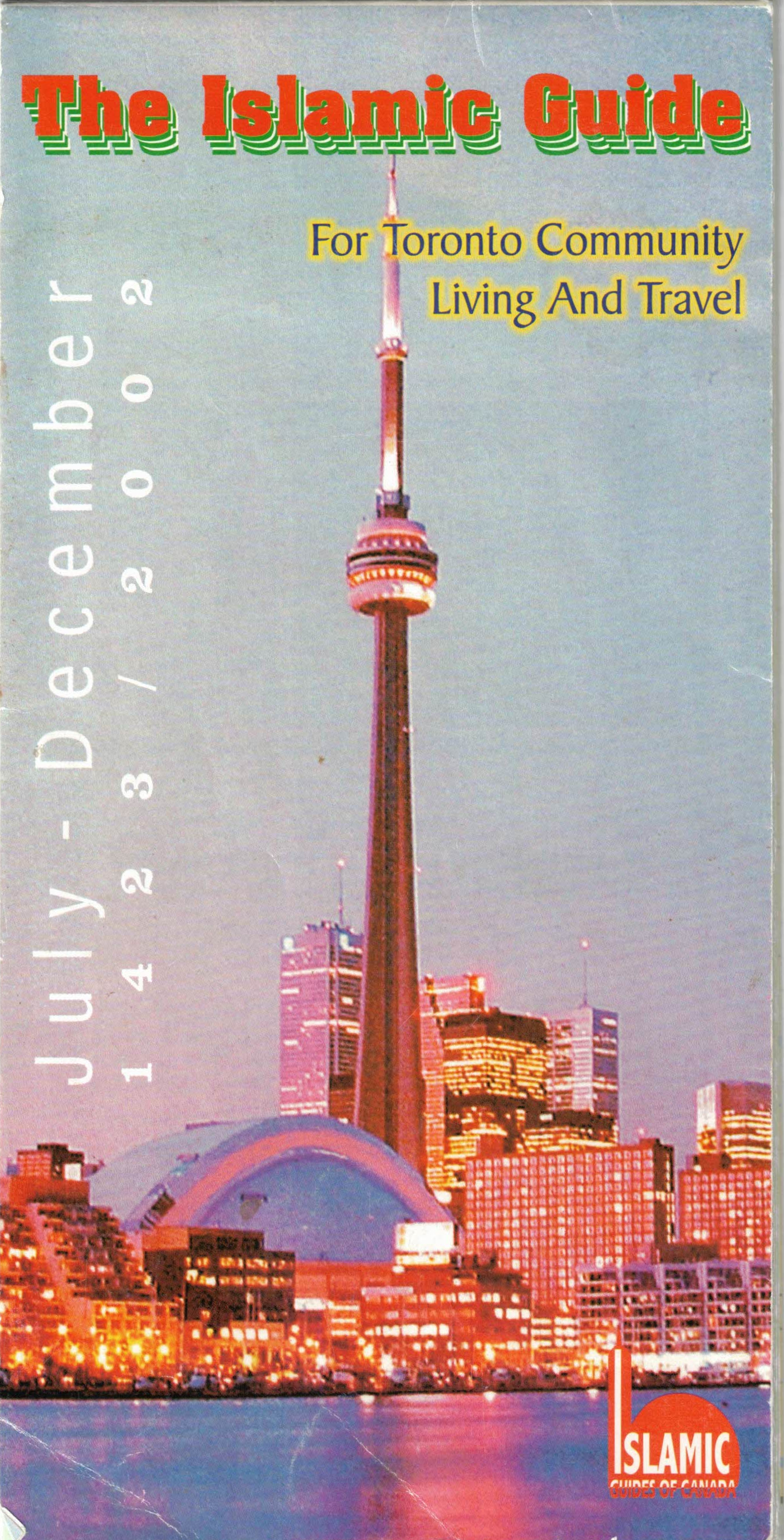
From the Archives: The Social Map of Homemaking
October 1, 2023
To begin our celebration of Islamic History Month, we reflect on Muslim experiences through 'Islamic guides' to Southern Ontario. Parked cars sit at the corner of Wilson Avenue and Beverly Hills Drive in North York. Steps from TARIC Islamic Centre, this parking lot was once a bustling site of halal restaurants, cafés, butchers — and Muslim life. Brown Suga Cafe was one of the many businesses frequented by patrons on their way to and from the nearby mosque. While the building that once housed Brown Suga Cafe has since been demolished, it is remembered in the pages of the 2002 Islamic Guide for Toronto Community.
Parked cars sit at the corner of Wilson Avenue and Beverly Hills Drive in North York. Steps from TARIC Islamic Centre, this parking lot was once a bustling site of halal restaurants, cafés, butchers — and Muslim life. Brown Suga Cafe was one of the many businesses frequented by patrons on their way to and from the nearby mosque. While the building that once housed Brown Suga Cafe has since been demolished, it is remembered in the pages of the 2002 Islamic Guide for Toronto Community.

 Documenting everything from halal butchers to Islamic bookstores to Muslim-owned auto shops, 'Islamic guides' to Canada offer Muslim people places to shop, eat, and congregate. They also tell stories of Muslim entrepreneurship, community building, and migrant dreams for better futures.
Documenting everything from halal butchers to Islamic bookstores to Muslim-owned auto shops, 'Islamic guides' to Canada offer Muslim people places to shop, eat, and congregate. They also tell stories of Muslim entrepreneurship, community building, and migrant dreams for better futures. While Muslim communities have been living on the land we now call Canada since 1854, immigration shifts in the 1960s brought new and diverse Muslim populations to cities and suburbs across the country. Many were seeking refuge in the wake of wars and imperial violence; others were students and economic migrants who aspired towards upward mobility in the North American context. These newly-formed communities worked to create a feeling of ‘home’ in this new landscape.
While Muslim communities have been living on the land we now call Canada since 1854, immigration shifts in the 1960s brought new and diverse Muslim populations to cities and suburbs across the country. Many were seeking refuge in the wake of wars and imperial violence; others were students and economic migrants who aspired towards upward mobility in the North American context. These newly-formed communities worked to create a feeling of ‘home’ in this new landscape.
Businesses like family-owned halal restaurants quickly became opportunities to bring ‘the homeland’s’ familiarity to budding Muslim communities. Muslim-owned hair salons and barbershops also oftentimes offered safety in the face of racial discrimination.
The listings and ads that fill the Islamic guides invite Muslims to support each other and collectively build a sense of ‘home’ that is abundant in new possibilities. The businesses reflect intangible parts of Muslim life in Canada – the smells, the sounds, and the people creating spaces of belonging.
In the Greater Toronto Area, ads from Hashi Restaurant, a Somali-owned restaurant in Weston to Rap a Pita in Scarborough signal the far-reaching physical presence of Muslims across the city. Interweaving English, Arabic, Somali, Farsi, Dari, Urdu, Turkish and French text, the guides foreground the rich cultural diversity of Muslim communities. We invite you to explore these excerpts and snippets from Islamic guides to Ontario published from the late 90s and early 2000s and, in doing so, discover a social map of Muslims in Canada.
We invite you to explore these excerpts and snippets from Islamic guides to Ontario published from the late 90s and early 2000s and, in doing so, discover a social map of Muslims in Canada.
Consider where you have found a sense of belonging and a feeling of ‘home’. What has changed since? What has remained the same? What are your individual and collective dreams for a better future?
Images courtesy of the Katherine Bullock fonds and the Naseer (Irfan) Syed fonds.